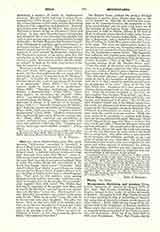

Odo, Bishop of Bayeux and Count of Kent, b. in Normandy previous to 1037; d. at Palermo, February, 1097. The son of Herluin de Conteville and Herleva de Falaise, previously by Duke Robert the mother of William the Bastard, from whom Odo about October 7, 1049, received the Diocese of Bayeux. He was present at the assembly of Lillebonne in 1066 at which William’s expedition to England was decided upon; he built, at his expense at Port-en-Bassin, fifty or a hundred vessels, accompanied the soldiers, exhorted them on the eve of the battle of Hastings, in which he himself fought. William gave him the castle of Dover and the Earldom of Kent, and three months later when he returned to Normandy he left as his viceroys Odo and William FitzOsbern. Both were merciless in stifling the insurrection of the Saxons. On his return to England in December, 1067, William made Odo a sort of viceroy; he gave him domains in the county of Kent, and several churches and abbeys. Lanfranc, Archbishop of Canterbury, protested successfully at the synod of 1072 against the spoliation of which he was the object; but Odo retained what he had taken from the Abbeys of Ramsey and Evesham. In 1080 he traversed Northumberland with an army, avenging the murder of Bishop Walcher of Durham; he multiplied his cruelties and was called the Great Tamer of the English.
He had the ambition to became pope. A soothsayer had foretold that the successor of Gregory VII should be called Odo. The latter first tried to seduce by his munificence the notables of Rome, where he built a palace; then with Hugh, Count of Chester, and a number of knights he set out for Rome. William met him at Wight, brought him before his barons, and reproached him with his exactions; as the barons refused to arrest the bishop, he declared that as count he would arrest him himself, and he brought him prisoner to Rouen. He refused to release him, despite the protests of Gregory VII. On his deathbed he granted this request reluctantly; for he feared that after his death this “wicked man would make trouble every-where”. Odo, according to Ordericus Vitalis, immediately plotted against the new king, William Rufus, his nephew; but in 1088, being besieged in Rochester, he was forced to accept as a grace the right to leave the town and depart from England. He established his credit in Normandy by the manner in which he assured to his nephew, Robert Courte Reuse, the possession of the city of Le Mans and defended his power against the house of Talvas. According to Ordericus Vitalis, in 1093 he blessed the incestuous union of Philip I of France, with Bertrada, Countess of Anjou, and obtained as a reward the revenues of the Church of Mantes. Urban II, at Dijon, absolved Odo. In 1095 he was present at the Council of Clermont at which the first Crusade was preached; he set out in September, 1096, but died at Palermo. Gilbert Bishop of Evereux, and Count Roger of Sicily erected a tomb to him in the cathedral.
Despite the eulogies of William of Poitiers it may be said, without approving the severe judgment of Ordericus Vitalis, that the life of this prelate was scarcely that of a churchman. He even had a son, called John. Nevertheless his presence at the synods of Rouen of 1055, 1061, and 1063 is proved; on July 14, 1077 he consecrated the cathedral of Bayeux; on September 13, 1077, he assisted at the dedication of the Church of St. Stephen in Caen, and on October 23, at that of Notre Dame du Bee. He was zealous in obtaining relics. He educated, at his expense, a number of young men who became distinguished prelates, and was liberal in his gifts to the Abbey of St. Augustine at
Canterbury. It has been asserted that he placed in the cathedral the famous Bayeux tapestry, but a detailed study of this tapestry has led Marignan to conclude that it was composed according to the description and information contained in the “Roman du
Rou” of Robert Wace, and that it was executed in the last thirty years of the twelfth century.
GEORGES GOYAU

